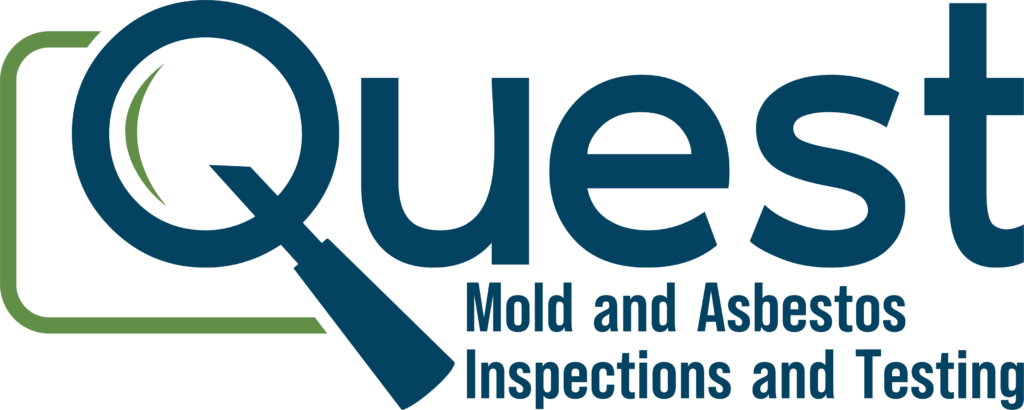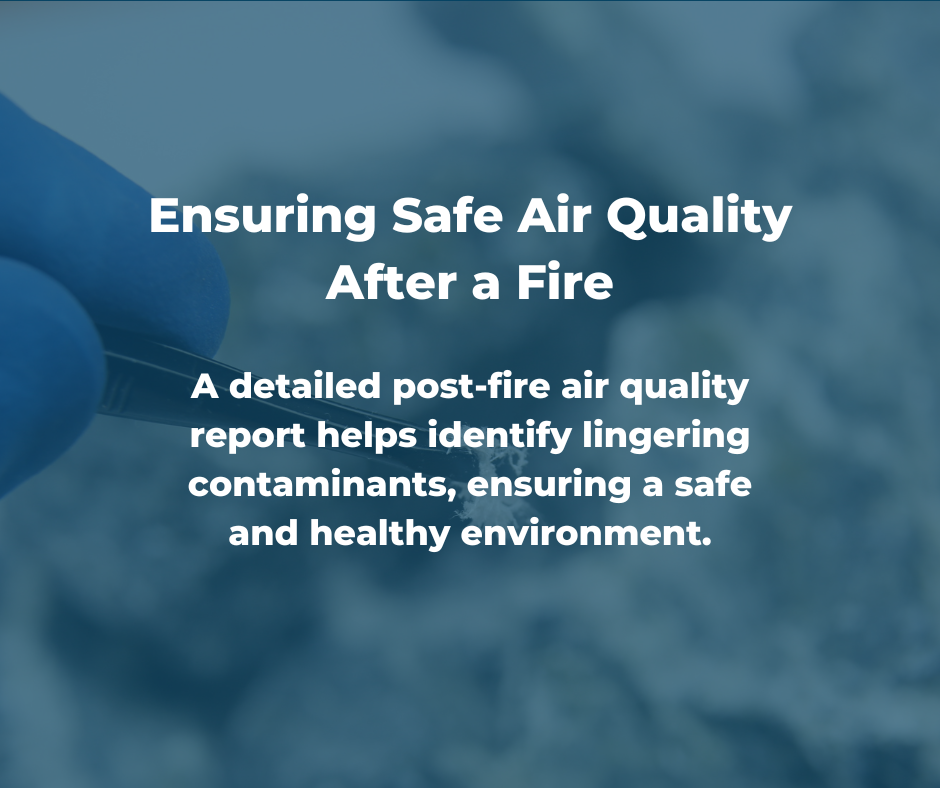Fires pose a significant risk to both property and health, not only due to the immediate destruction caused by flames but also due to lingering air quality issues. Recently, Quest Mold and Asbestos Inspections and Testing conducted air quality assessments to analyze airborne contaminants resulting from a fire.
See the full report: Post Fire Air Quality Testing
Identifying Combustion By-Products
After a fire, microscopic particles can persist in indoor environments, potentially posing health risks. The primary contaminants detected during our recent testing included:
- Black Carbon (Soot): Fine particulate matter formed from incomplete combustion, known for its ability to infiltrate deep into the respiratory system.
- Carbonized Material (Char): A decomposition product retaining partial structural integrity, indicating incomplete burning.
- Ash Residue: The remaining mineral deposits after combustion, which can contain trace metals and irritants.
Testing Process and Methods
To accurately assess indoor air quality, Quest Mold and Asbestos Inspections and Testing used air cassettes with pre-weighed PVC filters, following the NIOSH 5000 method. The collected samples were analyzed at EMSL Analytical, Inc. using Transmission Electron Microscopy (TEM) and Energy Dispersive X-ray Analysis (EDX) to identify and quantify particulate matter.
Air Quality Testing Results
Our recent assessments revealed the following:
- Apartment 4-R:
- Air volume tested: 138 liters
- Black carbon concentration: 0.413 mg/m³
- Apartment 4-F & Hallway:
- Air volume tested: 154 liters
- Black carbon concentration: 0.162 mg/m³
For context, the OSHA, NIOSH, and ACGIH exposure limit for carbon black is 3.5 mg/m³. While the detected levels were below regulatory limits, they still indicate potential contamination that warrants attention.
Recommended Actions for Air Quality Improvement
Following a fire, indoor air contamination can persist if not addressed properly. Based on our findings, we recommend the following steps:
- Professional Cleaning: Engage specialized cleaning services to remove soot, ash, and particulate matter from surfaces, HVAC systems, and air ducts.
- Enhanced Air Filtration: Use HEPA-grade air purifiers and HVAC filters to capture lingering fine particles.
- Surface Wipe Testing: Conduct additional surface testing to assess contamination levels on furniture, walls, and other indoor materials.
- Ongoing Air Monitoring: Regular indoor air quality testing helps ensure a safe living environment over time.
Why Trust Quest Mold and Asbestos Inspections and Testing?
Quest Mold and Asbestos Inspections and Testing specializes in post-fire air quality assessments, delivering accurate and actionable insights. Our advanced testing methodologies and partnerships with accredited laboratories ensure property owners receive the information they need to make informed decisions about remediation and safety.
Final Thoughts
Post-fire air quality testing is essential for identifying lingering contaminants and determining whether additional cleaning and mitigation efforts are needed. If your property has been affected by a fire, contact Quest Mold and Asbestos Inspections and Testing today for expert air quality analysis and recommendations to restore safe indoor environments.


